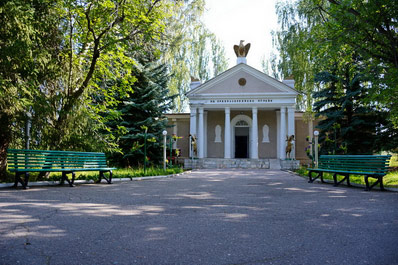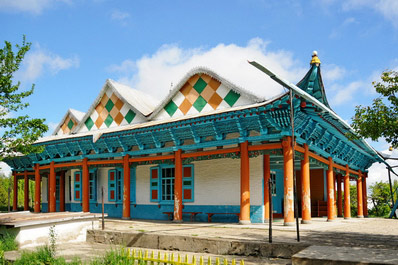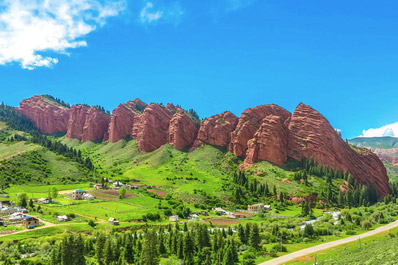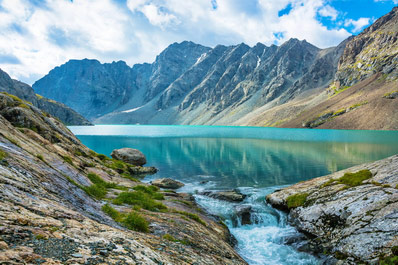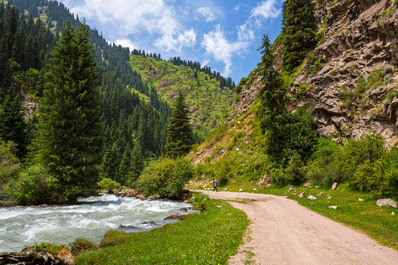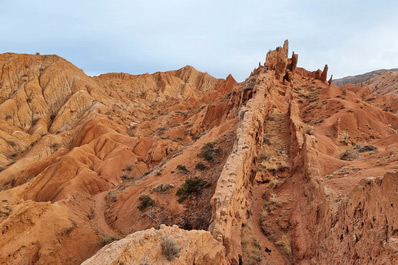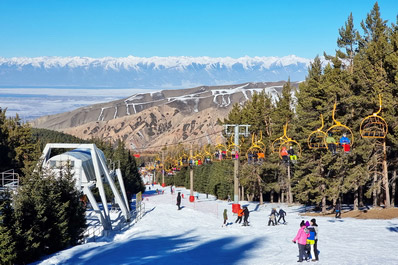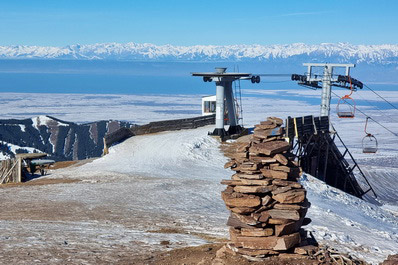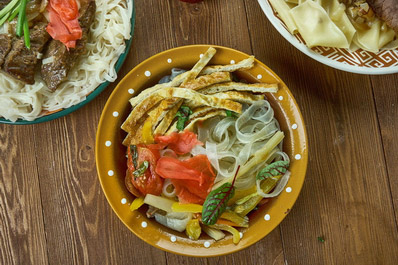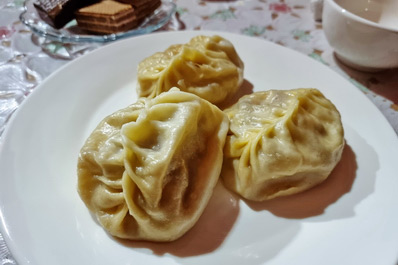Karakol, Kyrgyzstan
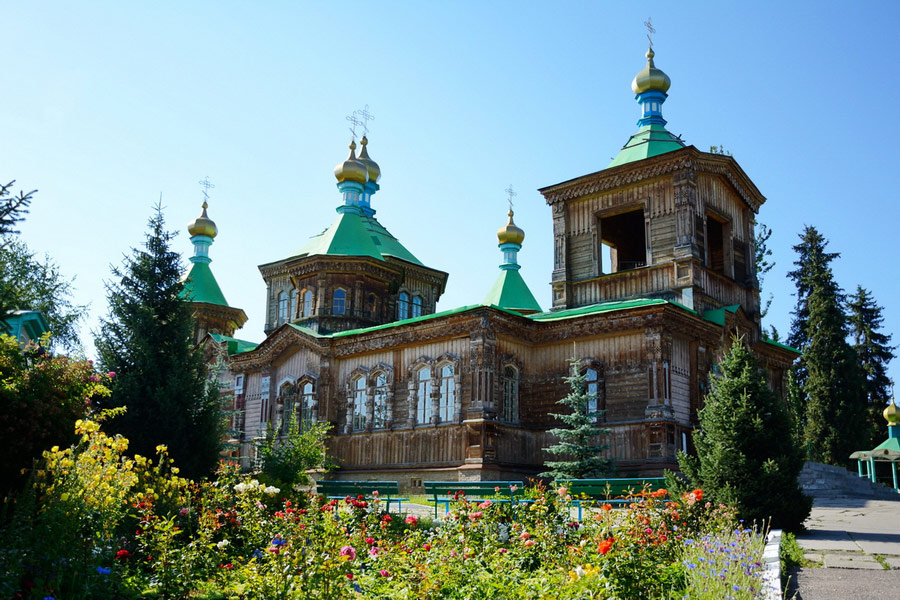
Karakol is a charming town in eastern Kyrgyzstan, nestled at the foot of the majestic Tien Shan mountains. Here, you can take in breathtaking natural scenery, discover the rich culture of the Kyrgyz people, and explore centuries of history preserved in unique architectural monuments. Karakol is perfect for active travelers - ski slopes, hot springs, and the famous Lake Issyk-Kul are just a short drive from the city. In this guide, we’ll explore the main sights to see in Karakol and the local dishes you absolutely must try.
When to go to Karakol?
The best time to visit Karakol depends on your preferences and travel goals.
Spring marks Karakol’s awakening from winter. Snow still covers the mountains, while the first flowers begin blooming in the valleys. The weather becomes milder, daylight hours lengthen, and there are still few tourists - making it an ideal time for peaceful walks and undisturbed nature exploration.
Summer is perfect for fans of outdoor activities, trekking, and sightseeing. Nature is at its most vibrant, and the weather is ideal for hiking and excursions. The beach season (July–August) is also great for families and those wanting to relax by Lake Issyk-Kul, when the water is at its warmest and the skies are consistently sunny.
Autumn brings a golden calm, with soft sunlight, dry days, and vibrant landscapes. It's the best season for scenic strolls and photography tours.
Winter transforms Karakol into a thriving ski resort. Skiers and snowboarders enjoy quality slopes, reliable snow cover, and the cozy ambiance of a winter getaway.
How to get there
The easiest way to reach Karakol is by flying into Bishkek (Manas Airport) and continuing by road. There are two main options:
- By car: The drive from Bishkek takes 6–7 hours and covers about 400 kilometers.
- By public transport: Minibuses and buses leave from Bishkek’s new bus station (1/1 Alma-Atinskaya Street) and depart when full. The journey takes 8–9 hours.
The road to Karakol runs along the southern shore of Lake Issyk-Kul, offering panoramic views of the lake and the surrounding mountains throughout the drive.
History of Karakol
Karakol’s history stretches back centuries, long before its official founding in 1869. For generations, nomadic Kyrgyz tribes roamed these lands, wintering by Issyk-Kul’s shores and moving to alpine pastures in warmer months. The territory changed hands multiple times, occasionally enjoying independence.
In 1831, the Kokand Khanate sent troops to control local trade routes and impose taxes. A year later, they built several forts, one named Karakol after the nearby river. Their rule ended in 1843 when the Kyrgyz rebelled and reclaimed their autonomy. Facing further threats, they sought protection from the Russian Empire in 1855, gaining shelter from both Kokand incursions and Qing pressure.
In 1857, famed Russian explorer Pyotr Semenov-Tyan-Shansky passed through the area, noting the absence of any permanent settlements. But by 1863, a Russian military outpost had been established, and on July 1, 1869, Karakol was officially founded. It soon developed into a key regional center.
From 1939 to 1991, during the Soviet period, Karakol was renamed Przhevalsk and grew into an agricultural and industrial hub. With Kyrgyzstan's independence in 1991, the city regained its historical name.
Sights of Karakol
Holy Trinity Cathedral is a remarkable example of wooden Orthodox church architecture. Its history reflects the turbulence of the 20th century: over the years, it has served as a warehouse, military club, and school gym. Despite these changes, the cathedral has retained its striking design and spiritual significance.
Dungan Mosque is a stunning architectural masterpiece built entirely without nails. It reflects the craftsmanship of the Dungan people, with ornate woodwork and symbolic color schemes: red wards off evil spirits, yellow brings luck and prosperity, and green is a divine blessing. The exterior is richly adorned with carved patterns and colorful details.
Przhevalsky Museum is the centerpiece of a memorial complex honoring Russian explorer and scientist Nikolai Przhevalsky. It features rare photos, personal items, original notes, and stuffed Central Asian wildlife, offering insight into his extensive travels and discoveries.
Attractions in the vicinity of Karakol
The area surrounding Karakol is known for its stunning landscapes, mountain adventures, and tranquil retreats. Whether you're seeking excitement or serenity, there’s something here for everyone.
Jeti-Oguz Gorge, 30 kilometers from Karakol, is one of Kyrgyzstan’s most iconic natural landmarks. Its name, meaning “Seven Bulls,” refers to the striking red rock formations rising in a row along a mountain river. The contrast of crimson cliffs, green forests, and blue skies is unforgettable. The area also features healing springs and small thermal pools.
Lake Ala-Kul is a striking alpine lake tucked high in the Terskey-Ala-Too mountain range, at over 3,500 meters above sea level. One of the most sought-after destinations near Karakol, it can be reached either on a strenuous day hike or as part of a multi-day trekking route. Due to the challenging terrain and rapidly changing weather conditions, it is highly recommended to travel with a local guide who can navigate the trails and ensure your safety.
Altyn-Arashan Gorge offers some of the most scenic landscapes in the region, with each turn unveiling postcard-perfect views. Its name, meaning “golden spring,” refers to the numerous natural thermal waters that emerge from the earth along the valley. One of the main highlights of the gorge is Palatka Peak, a snow-capped formation rising to 4,680 meters. Reaching the summit is a demanding challenge suitable only for well-prepared travelers, but the panoramic vistas are rewarding even without a full ascent.
Skazka Canyon captivates visitors with its surreal, wind-sculpted terrain. True to its name - “fairy tale” in Russian - its fantastical rock formations resemble enchanted castles and towering fortresses. Situated along the southern shore of Lake Issyk-Kul, the canyon was shaped by centuries of erosion, forming whimsical figures in the sandstone. At sunrise and sunset, the red, orange, and golden tones of the ridges create particularly dramatic and photogenic scenes.
Karakol Ski Resort
Karakol Ski Resort is the most popular winter destination in Kyrgyzstan, catering to both beginners and experienced skiers. The area offers consistent snow, a variety of slopes, and breathtaking views of Issyk-Kul. While the peak season runs from November to April, the resort is open year-round with summer activities available as well.
The resort features five modern cable lifts servicing trails that range from gentle 800-meter runs to exhilarating descents stretching 4.5 kilometers. The highest ski point reaches 3,040 meters above sea level. On-site amenities include a fully equipped gear rental center and a restaurant where visitors can enjoy authentic local cuisine. For those planning an extended stay, accommodation options include comfortable double rooms as well as spacious two- and three-story cottages.
Karakol Cuisine
Karakol is renowned not only for its dramatic mountain scenery but also for its distinctive culinary heritage, shaped by the rich traditions of Dungan and Uyghur cuisine. Local specialties are known for their bold flavors, aromatic spices, and inventive ingredient pairings. A visit to Karakol is incomplete without dining at authentic eateries where chefs prepare time-honored recipes passed down through generations. Here are some signature dishes you shouldn’t miss.
Ashlyamfu (ashlyan-fu) is a refreshing cold soup, especially popular during the summer months. It features a combination of tender wheat noodles and firm starch noodles, served with pieces of meat, egg, and a flavorful vegetable broth. The dish’s standout element is its signature “lazy” seasoning - spicy, tangy, and aromatic. It’s traditionally paired with a crisp potato pie and a strong cup of hot tea, creating a perfectly balanced meal.
Lagman is a hearty noodle dish of Chinese origin that has become a staple across Central Asia. Made with noodles, meat, and vegetables in a fragrant, spiced broth, lagman is both comforting and satisfying - ideal for restoring energy after a long trek or an active day.
Karakol manty and Uyghur hoshany are robust and flavorful dumplings that reflect centuries of culinary craftsmanship. Whether filled with seasoned meat and herbs or sweet pumpkin, the thin dough wrappers and spicy accompaniments - including the signature “lazy” sauce - create a deeply satisfying and aromatic experience rooted in Eastern tradition.

